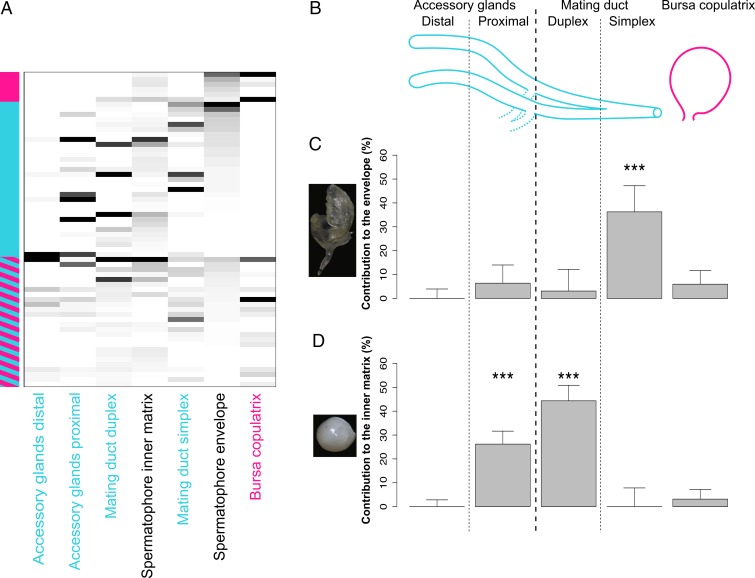Fig. 1.
The spermatophore is a complex product of the male and female reproductive tracts and sequentially transferred during mating. (A) Abundances of 63 proteins identified between the inner matrix and the envelope of the spermatophore. Each row represents a protein, and each column represents a tissue. The vertical column on the left side of the heat map represents the origin of the gene product (blue for male and pink for female; a combination of pink and blue indicates that transcripts encoding the proteins are found in a combination of reproductive and nonreproductive tissues of both sexes). Abundance is represented by grayscale (black, highly abundant; white, absent from sample). (B) Simplified schematics of an unfolded P. rapae male reproductive tract and the female bursa copulatrix. Segments are not drawn to scale. (C) Contributions of male and female reproductive tissues to the envelope of the spermatophore. ***P < 0.001. (D) Contributions of male and female reproductive tissues to the inner matrix of the spermatophore.

